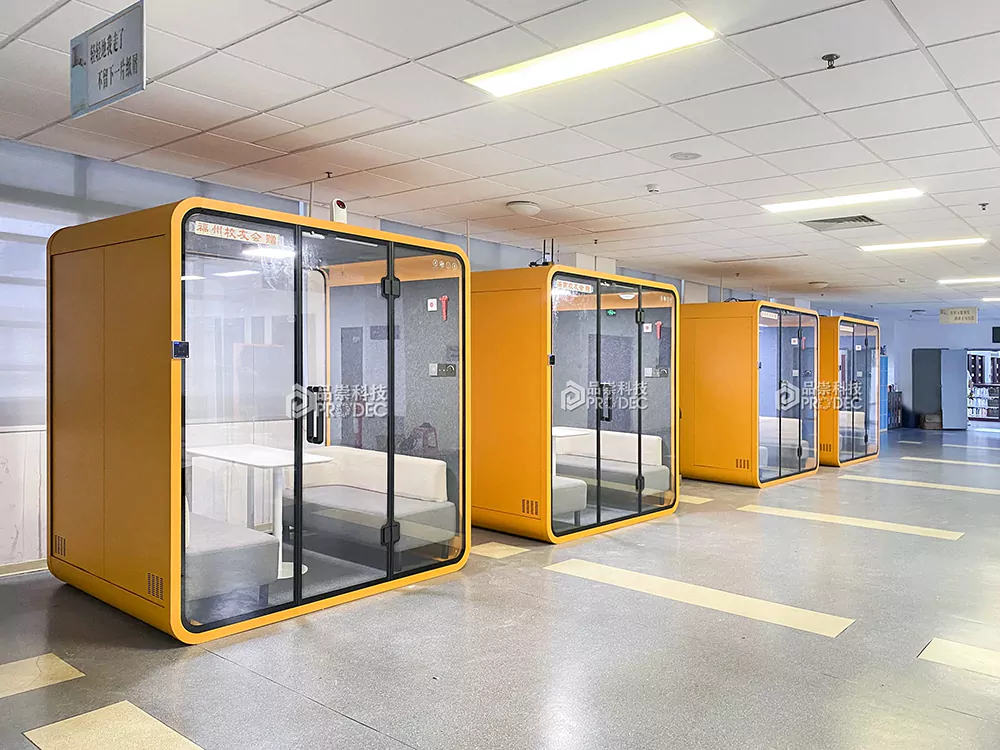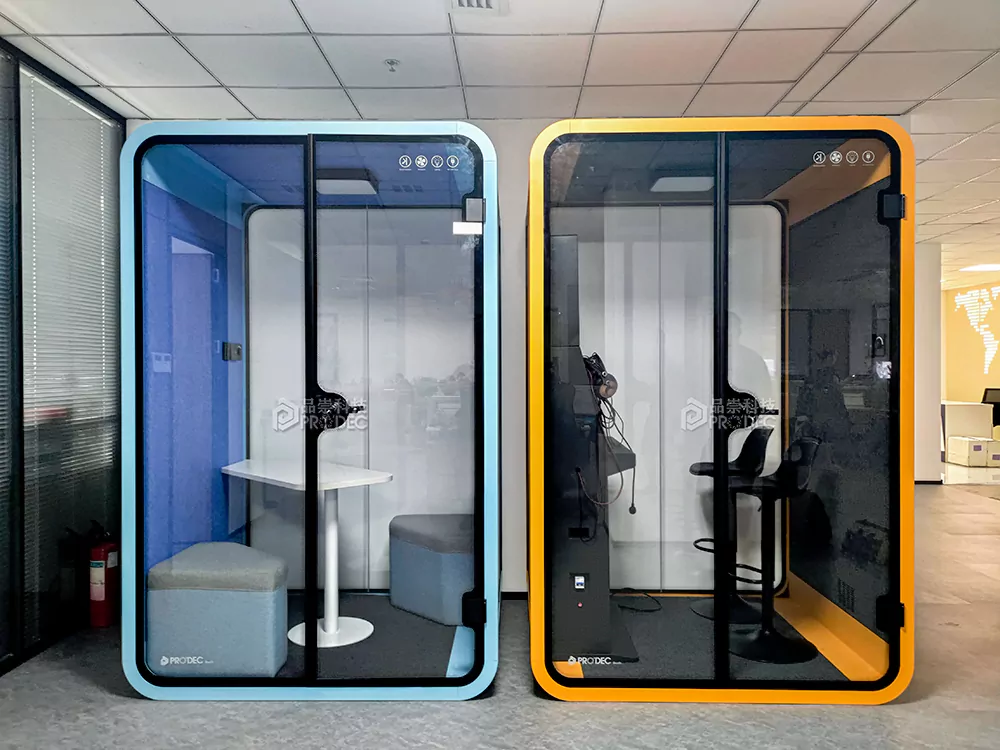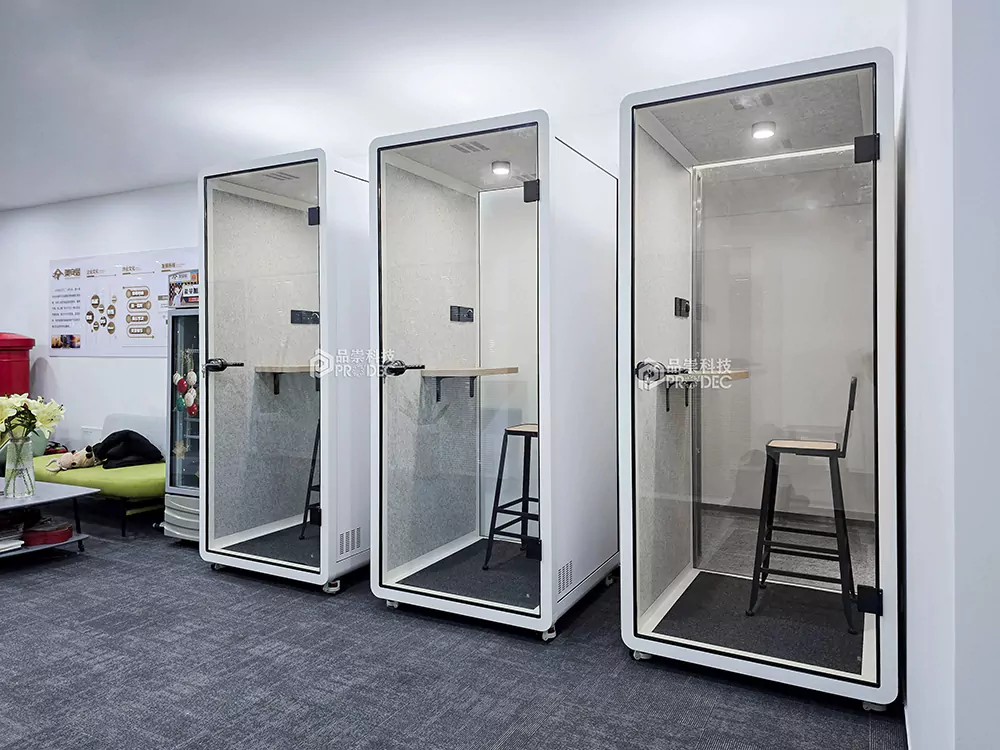Akustische Kabine: Anleitung für einen lärmfreien Kreativraum
Why Every Home Studio Needs an Acoustic Booth
If you’re serious about music production, podcasting, or voice-over work, you’ve probably faced the same frustrating issue: unwanted background noise. Whether it’s traffic outside, household appliances, or even your pet, these sounds can ruin an otherwise perfect take. That’s where an acoustic booth for home studio recording comes in. Unlike traditional soundproofing methods that require major renovations, acoustic booths offer a practical, modular solution. They’re essentially portable, self-contained environments designed to block external noise and control internal acoustics.
These booths are especially valuable for urban dwellers or those working in shared spaces. Imagine being able to record crystal-clear vocals without worrying about your neighbor’s lawnmower or the delivery truck passing by. Acoustic booths create a controlled sonic environment, allowing you to focus solely on your performance. They’re not just for musicians—content creators, remote workers, and even students benefit from the privacy and quiet they provide. With rising demand, manufacturers like Huangshuo Tech and others now offer customizable options, making it easier than ever to find a model that fits your space and budget.
How Acoustic Booths Work: The Science Behind the Silence
So, how does a small booth actually block out noise? It’s not magic—it’s physics. An effective acoustic booth for home studio recording relies on three key principles: mass, sealing, and damping. First, high-density materials such as steel, multi-layered composite panels, and sound-absorbing insulation add mass, which prevents sound waves from passing through. Second, tight seals around doors and windows eliminate air gaps—common weak points where sound leaks in. Premium models use specialized gaskets and double-seal mechanisms to ensure maximum isolation.
Third, internal damping materials like acoustic foam, polyester fiber, and bass traps absorb reflections inside the booth, reducing reverb and echo. This is crucial because even if external noise is blocked, poor internal acoustics can still degrade audio quality. Some advanced units also incorporate vibration-damping feet or anti-vibration mounts to isolate the structure from floor-borne noise. Together, these features can achieve sound reduction ratings of 30–50 dB, transforming a noisy room into a professional-grade recording space.
Core Components of a High-Performance Acoustic Booth
Let’s break down what makes up a top-tier acoustic booth. The outer shell is typically constructed from sturdy materials like stainless steel or laminated wood, providing structural integrity and sound-blocking mass. Inside, layers of acoustic insulation—such as mineral wool or recycled polyester—are strategically placed within the walls, ceiling, and floor. These materials convert sound energy into heat, effectively silencing external disturbances.
The door is another critical component. A well-designed booth uses airtight, double-door systems or magnetic seals to prevent sound leakage. Transparent models often feature laminated glass (e.g., 8mm + 5mm layers) that maintains visibility while offering excellent sound attenuation. Ventilation is also essential; silent, ducted airflow systems with baffles allow fresh air circulation without introducing noise. Additional features like built-in lighting, power outlets, USB ports, and motion-sensor controls enhance usability, turning the booth into a fully functional mini-studio.
Choosing the Right Size and Type for Your Needs
Not all acoustic booths are created equal—and size matters. When selecting a booth for your home studio, consider your primary use case. Are you recording solo vocals, hosting two-person interviews, or playing instruments like keyboards or drums? Single-person pods are compact and ideal for voice work, while larger configurations (double or four-person cabins) accommodate more equipment and collaborators. Foldable or modular designs offer flexibility, especially if you have limited space or need to reconfigure your room layout frequently.
Some popular variants include phone booth-style units for quick calls or podcasting, glass-walled studios for natural light and aesthetics, and fully enclosed sleep pods that double as quiet zones. Brands like Huangshuo Tech offer customization based on blueprints, allowing you to tailor dimensions, finishes, and accessories. If you’re setting up a dedicated music studio or a hybrid workspace, investing in a scalable, professionally engineered booth ensures long-term satisfaction and performance.
Installation, Placement, and Room Integration Tips
One of the biggest advantages of modern acoustic booths is their ease of installation. Many are delivered as flat-pack kits or pre-assembled units that can be set up in hours—some even come with professional on-site assembly services. To maximize effectiveness, place your booth away from walls that share plumbing or HVAC systems, as these can transmit vibrations. Ideally, position it on a solid, level surface; rubberized feet or isolation pads help decouple it from the floor.
Avoid corners where bass frequencies tend to build up unless you’ve added internal bass traps. Ensure there’s enough clearance around the unit for ventilation and access. If you’re using it in a living area, consider aesthetic integration—neutral colors, minimalist design, and optional branding make the booth blend seamlessly into your decor. For tech integration, route cables through designated ports and pair the booth with high-quality microphones, audio interfaces, and monitoring gear to complete your setup.
Top Use Cases Beyond Music Recording
While the acoustic booth for home studio recording is a game-changer for musicians, its applications extend far beyond. Remote professionals use them as private call pods for Zoom meetings, eliminating distractions and background chatter. Educators and students benefit from focused study environments, especially in noisy households. Podcasters and streamers leverage them for clean audio capture without post-production cleanup. Even parents use smaller versions as baby sleep pods, shielding infants from disruptive household sounds.
Innovative companies are now adapting these booths for pet use—imagine a quiet, insulated doghouse or cat enclosure that reduces barking or meowing noise. Public spaces like libraries, coworking offices, and government service centers deploy them as “quiet pods” for confidential conversations or focused work. The versatility of these units makes them a smart investment for anyone seeking acoustic privacy, whether at home or in commercial settings.
Maintenance and Long-Term Care for Optimal Performance
To keep your acoustic booth performing at its best, routine maintenance is essential. Start with regular cleaning—wipe down interior surfaces with a damp cloth to remove dust, which can degrade fabric-based absorptive materials over time. Check door seals and gaskets periodically for wear or compression; replace them if gaps appear. Inspect ventilation filters and clean or replace them every few months to maintain airflow efficiency and prevent motor noise buildup.

Avoid placing heavy objects on the roof or walls, as this can compromise structural integrity. If your booth has electronic components (like LED lighting or USB hubs), ensure connections remain secure and moisture-free. In humid climates, consider using a small dehumidifier inside to prevent mold growth on soft materials. With proper care, a high-quality acoustic booth can last for years, continuing to deliver pristine sound isolation for your creative projects.
Final Thoughts: Is an Acoustic Booth Worth the Investment?
At first glance, the price tag of an acoustic booth—ranging from $1,000 to over $5,000—might seem steep. But when you consider the cost of professional studio time, endless hours of audio editing, or lost productivity due to distractions, the value becomes clear. An acoustic booth isn’t just a piece of furniture; it’s a productivity tool and a sound investment in your creative output.
Manufacturers like Prodec Tech offer competitive pricing with customization and installation support, making professional-grade acoustics accessible to more users. Whether you’re building a home studio, upgrading your workspace, or simply craving a quiet retreat, an acoustic booth delivers measurable benefits. With advancements in materials, design, and modularity, now is the perfect time to explore how this innovative solution can transform your recording experience.
本文由人工智能技术生成,基于公开技术资料和厂商官方信息整合撰写,以确保信息的时效性与客观性。我们建议您将所有信息作为决策参考,并最终以各云厂商官方页面的最新公告为准。






